TLH 200: An evolving list of 200 history makers who shaped Tallahassee
- Oops!Something went wrong.Please try again later.
The TLH 200: Gerald Ensley Memorial Bicentennial Project is proud to announce the fourth installment of our rolling list of 200 people who laid the foundation for the growth of the civil society we find today in Tallahassee.
As the city commemorates the 200th anniversary of its founding, the Tallahassee Democrat and Real Talk 93.3 have cast a wide net to find artists, educators, civil rights leaders, politicians, athletes, builders, business titans and neighborhood icons who earned a place in the spotlight.
We need your help in identifying those individuals.
You can email your suggestions of candidates to be profiled and other suggestions to history@tallahassee.com. And listen to Greg Tish’s morning show on Real Talk 93.3 where we'll discuss the legacy of these history makers.
The only condition is that those featured below must be deceased. Ten names will be added twice a month, so be sure to check back for updates.
Without further ado here is the fourth list of 10 people who helped make Tallahassee someplace special ...
Read the full list online at tallahassee.com/tlh200.
Nathaniel (1932 – 2000) and Julian “Cannonball” Adderley (1928 - 1975)
Julian Edwin Adderley and older brother Nathaniel Carlyle were the sons of Florida A&M University professors who grew up to be Florida’s music ambassadors to the world. In middle school, Nat and Julian played for what would become the FAMU Marching 100, and in high school they jammed with Ray Charles in Tallahassee night clubs.
After college and military service the brothers moved on to New York City in the 1950s and became international jazz legends.
Trumpeter Nat joined the Woody Herman sextet, Julian, a saxophonist known as “Cannonball,” landed with the Miles Davis sextet.
The two also formed The Cannonball Adderley Quintet, and in 1960 scored a national hit with the “Work Song,” inspired by a chain gang at work on Tallahassee’s Pensacola Street.
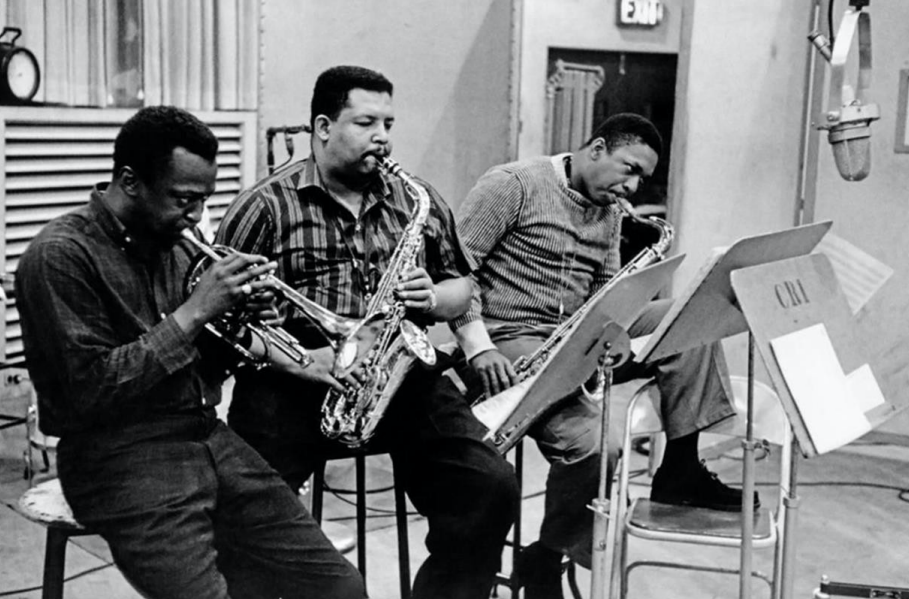
“They used convict labor to pave the street. The convicts used that call-and-response method to sing as they worked,” recalled Adderley in a 1994 AP interview about the lyrical playfulness he fused with soul, jazz, funk and blues in what became his biggest hit and a jazz standard.
Competing amidst a British invasion of American popular music in the mid-1960s, Cannonball topped the jazz, R&B, and pop charts in 1966 with “Mercy, Mercy, Mercy.”
When a stroke claimed Cannonball a month before his 47th birthday, Gov. Reuben Askew declared September 15, 1975, Julian “Cannonball’ Adderley Day across the state of Florida.
Nat died in 2000 of complications from diabetes. He was 68.
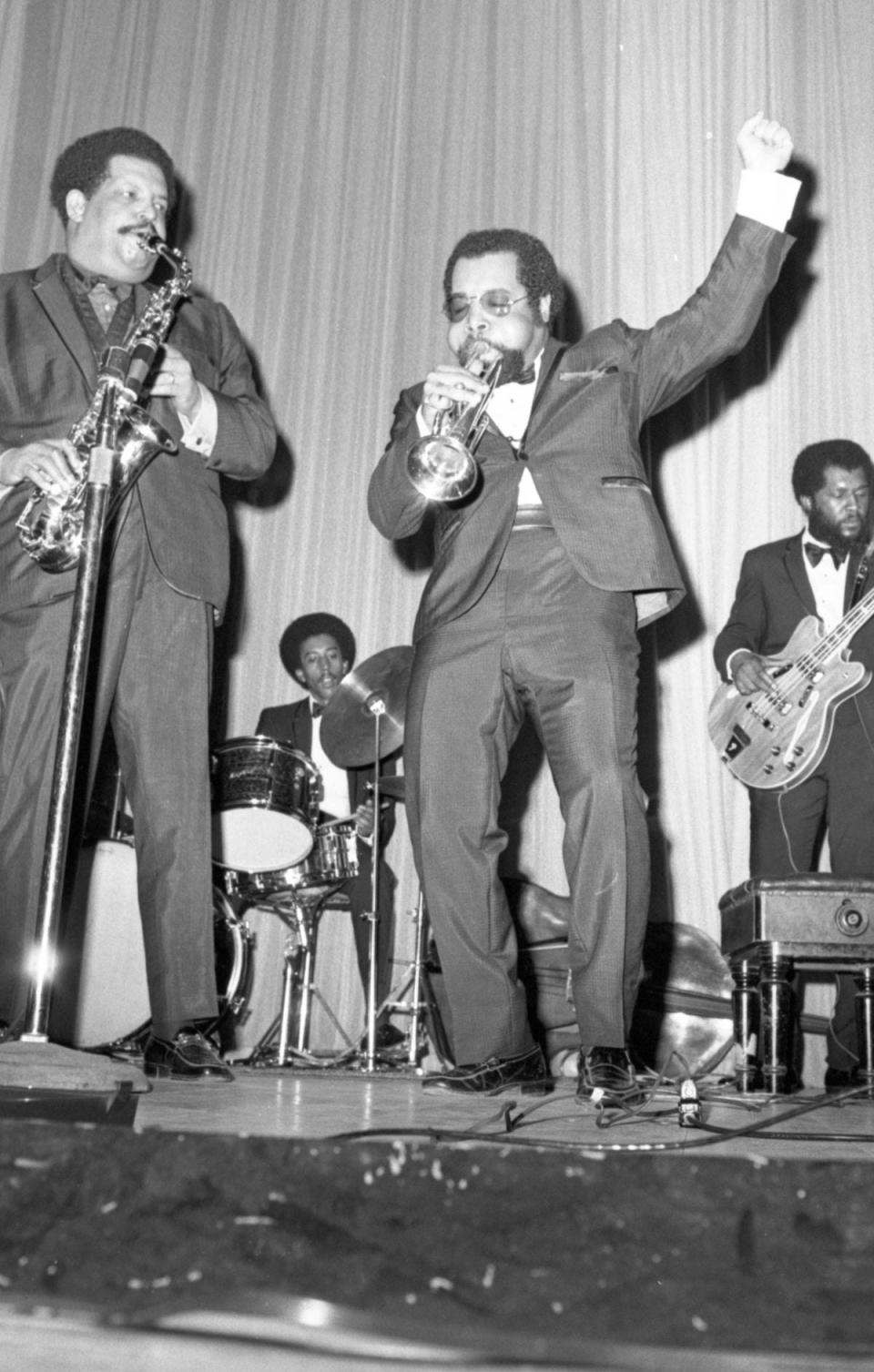
Hit parade: A roll call of some of the musical artists who hit the big time with Tallahassee ties | TLH 200
Both are buried in the Southside Cemetery in Tallahassee.
The Adderley Amphitheater at Cascades Park and the music institute at FAMU is named in their honor.
Jean McCully (1930 - 2014)
A Sparta, Tenn., nurse met an internist at a Memphis hospital in 1961, they married and moved to Tallahassee. Al McCully would be the third urologist to open a practice in the city, while Jean is remembered as a volunteer extraordinaire – Tallahassee’s “can-do woman.”
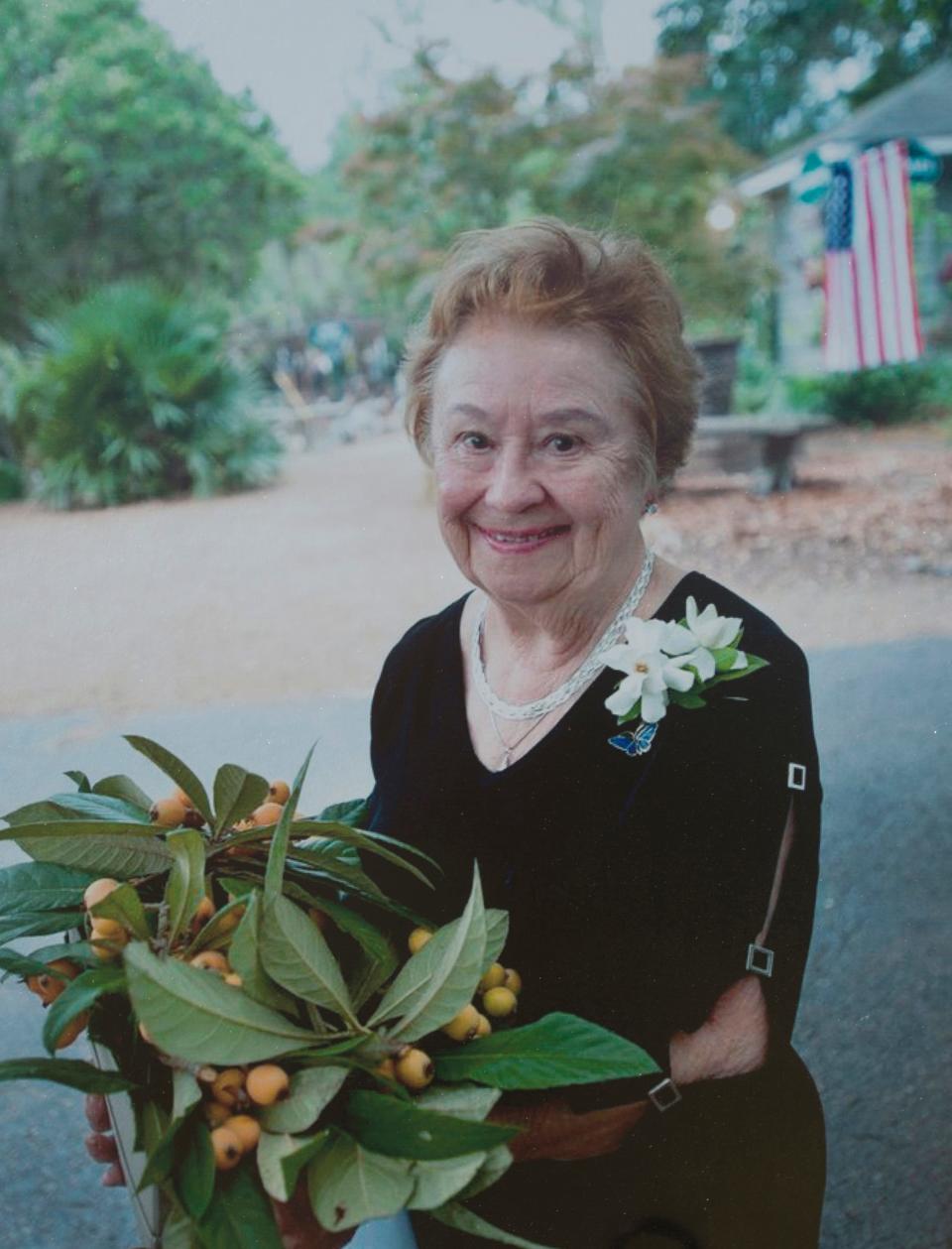
She raised money for the Girl Scouts’ overnight camp. Served on the Boys and Girls Club of the Big Bend, The Girl Scouts, and the James Madison Institute. Was president of the Garden Club.
She also was an original volunteer with the Red Hills Horse Trials. Jean cooked breakfast for the judges and then led botanical tours of the grounds.
McCully joined Friends of the Library when the library was housed in a former Elks Club and promoted construction of the block-sized downtown facility and its six branches
In 1983, Jean McCully successfully lobbied the director of Tallahassee Memorial Healthcare to bring hospice under the hospital umbrella. In a single day, she raised $60,000 to bring ballet superstar Mikhail Baryshnikov to Tallahassee for a performance to benefit the program.
“It’s not like she would strut on stage. You never knew she was involved,” recalled Marjorie Turnbull at McCulley’s passing.
“You had to ask, ‘Jean, did you do that?’”
The Jean McCully Family House at the Big Bend Hospice campus on Mahan Drive recognizes her work for the community.
Romero Mitchel Sealey (1889 - 1928)
R.M. Sealey arrived in Tallahassee from Fort Myers in 1916 to become principal of Leon High School and over the next 12 years would shape the course of Florida public education for much of the 20th century.
“Few men have had such an overwhelming and beneficial impact on a city [Tallahassee] in such a short amount of time,” Florida State College of Women President Edward Conradi wrote upon Sealey’s death in 1928. “His accomplishments as both a leader and a friend are truly unparalleled.”
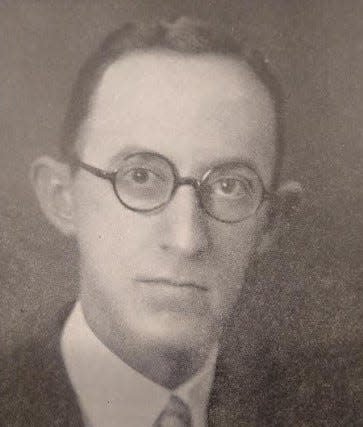
In Fort Myers, Sealey led the Gwynne Institute and had solicited Thomas Edison and Henry Ford as supporters to build that city’s first high school. He continued to promote public education in Tallahassee as the Superintendent of Leon County Schools and then the state Superintendent of High Schools, where he standardized high school curriculums and testing requirements.
Sealey also established the Florida Education Association and organized Tallahassee’s first Boy Scout Troop.
While enroute to the National Education Association convention in Boston in 1928, the 39-year-old Sealey suffered a cerebral hemorrhage in Washington, D.C.
“Although he was a man among men. He was never too busy to talk to a boy or girl about concerns and to provide the advice and encouragement to help them achieve their goals,” said Bunyan Stephens, pastor of the First Baptist Church.
The entire student body of Leon High School attended the service and burial at Oakland Cemetery. The Tallahassee Dailey Democrat described the funeral as one of the largest in city history.
Sealey Elementary School on Allen Road is named in his honor.
John McIver (circa 1800)
On April 9, 1824, John McIver led the first group of white settlers to Tallahassee. A horse-drawn wagon from North Carolina carried seven pioneers; two white men, two women, two children, and a mulatto man on a mission to build a log cabin to serve as a capitol building for the new Florida territory.
The group pitched a camp on a hillside south of the present-day intersection of Apalachee Parkway and North Monroe Street. Tallahassee Democrat columnist Gerald Ensley speculated it was probably located along present-day Gaines Street.
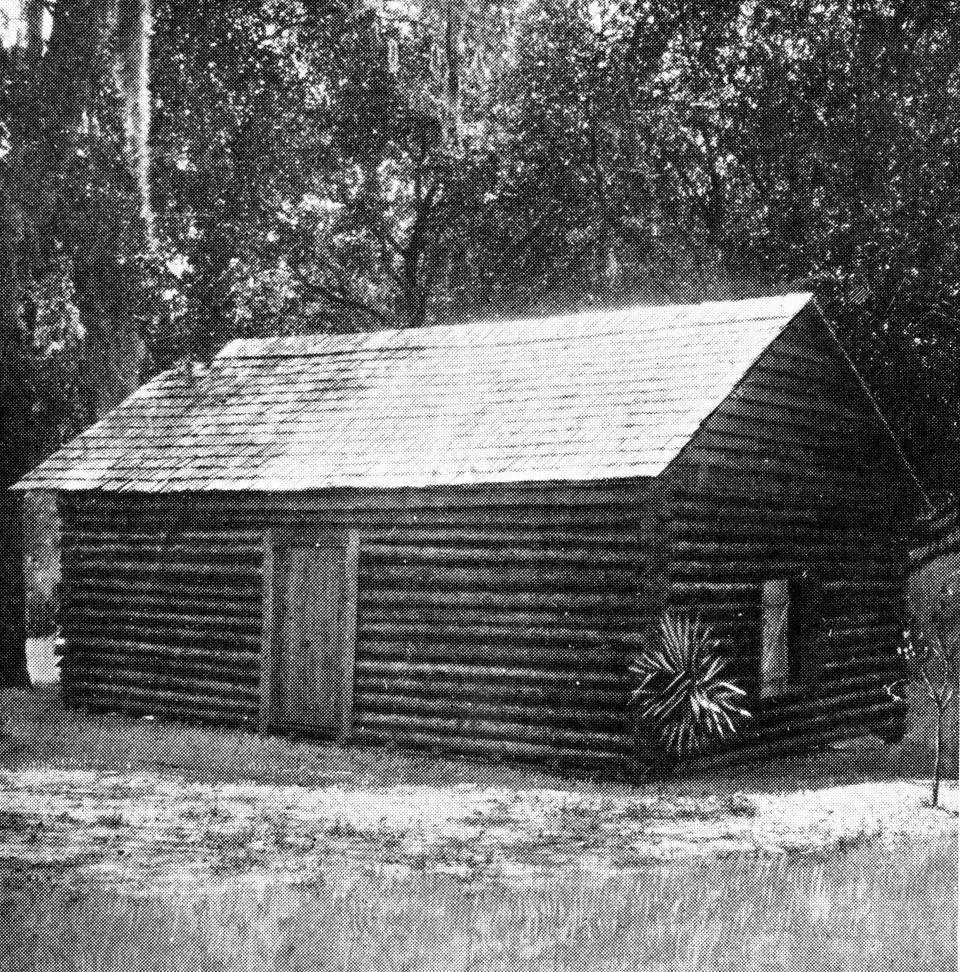
Replica in the works: City to recreate first Capitol – a log cabin – for bicentennial celebration this year
TLH 200: Cascades bicentennial journey: Waterfall to baseball field to brownfield to pinnacle park
McIver said the site was on a southern slope overlooking what could very well be a picture book fairyland.
“To the southward and westward, the country opened to view like a magnificent park, gently undulated and studded with beautiful basins of limpid water, at their feet a crystal fountain gushing from the declivity of the hill; to the eastward the view was more confined by the thick foliage of the undergrowth which served to screen the view through not the sound, of a beautiful cascade,” he wrote in the “Memorial of John McIver of the City of Tallahassee."
The group cleared a site on top of the hill, two Gadsden County planters sent slaves to help build a cabin and two annexes. The work was completed in time to accommodate the Legislature’s first Tallahassee session that November, and within a year more than 50 homes and two hotels were constructed.
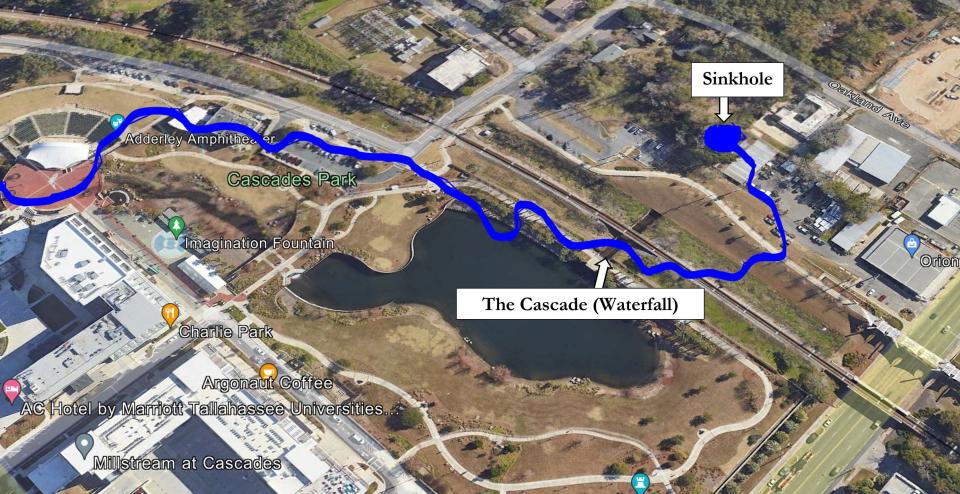
McIver would stay in town. He would become the first Territorial Clerk of the City of Tallahassee and the auctioneer for the sale of the first house lots sold.
Lucille Baldwin Holliday Brown (1922 - 2019)
Born and raised in the historic Smokey Hollow neighborhood, Brown is remembered as someone who loved history, books, and laughter. Brown worked as a librarian in Leon County Schools at Bond Elementary, Bellevue Middle School, and Griffin High School – and sold encyclopedias in her spare time.
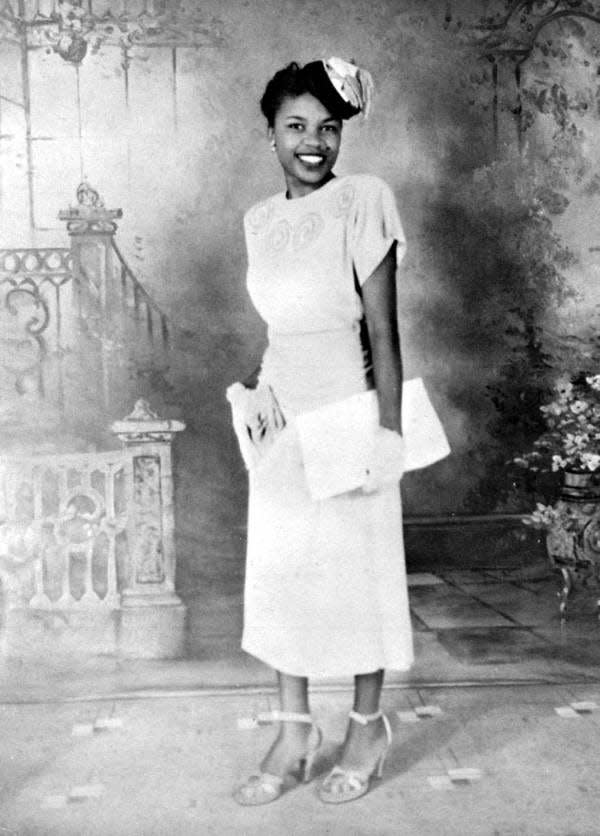
In the 1940s, Brown and Gladys P. Anderson pushed to open the library at the then Black-segregated Lincoln High to the adult public. Principal Gilbert Porter explained to the Tallahassee Democrat that there was a “dearth” of reading material in Black households.
In addition to its collection of books the school library also had subscriptions to the Tallahassee Democrat, several Florida newspapers, the Atlanta Constitution, The Baltimore Afro-American, the Sunday New York Times, and the Christian Science Monitor.
Brown worked for the county school district for 39 years and in the latter part of her career took a night job at the public library.
“Back then, there was never an African American that had worked in a library,” recalled Riley Museum Founder Althemese Barnes at Brown’s passing. “So, we were happy to see her there.”
Blanche "Bunky" Atkinson (1929 - 2022)
Blanche Younis Atkinson was born in Tallahassee to Lebanese immigrant parents who ran a peanut/hamburger stand on Adams Street where the House Office Building stands now.
She was a registered nurse with the Leon County Health Department and married to Glenn F. Atkinson. They would have four daughters.
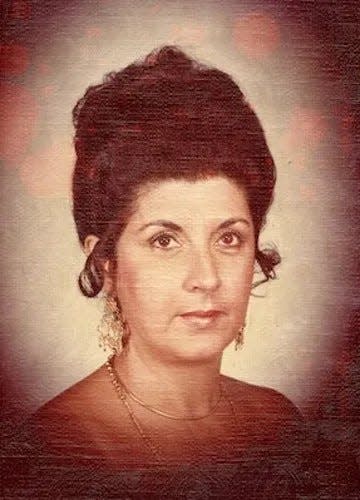
Bunky went to work for the county’s civil defense during the Cuban missile crisis and stayed with the agency as its mission shifted from war to peacetime concerns of natural disaster response and hazardous waste management.
Atkinson was director of Civil Defense and Emergency Preparedness for Leon County in 1985 when Hurricane Kate roared through Tallahassee’s urban forest and paralyzed city roads with downed trees that left most of the city without electrical power.
Atkinson wanted to impose a curfew until the roads were cleared, but state emergency management officials told her there were no procedures to do so.
So, she wrote an outline for how a community could require residents to remain indoors after the sunsets and presented it to County Commission Chairman Lee Vause and Tallahassee Mayor Hurley Rudd to sign.
“She knows how to get things done. She’ll talk you out of an arm and a leg,” recalled former Tallahassee Police Chief Melvin Tucker at Atkinson’s retirement in 1987.
A curfew was imposed from 7 p.m. Friday, Nov. 22, to 7 a.m. Saturday, Nov. 23, 1985. It allowed for only law enforcement, and road and utility workers to be outside.
By Saturday afternoon enough tree litter was cleared from the roads and electricity restored to lift the curfew.
“I think it’s the only 24-hour period in Tallahassee history where there was not a single crime, not a single arrest. Everybody stayed home,” Atkinson told Tallahassee Democrat’s Gerald Ensley on the 25th anniversary of Kate.
Clyde Spencer (1916 - 2005)
Clyde Edward Spencer had a life-long love for trains. After he graduated from high school in New Smyrna Beach he got a job with the railroad, married Sara Lee Boynton, and moved to Tallahassee.
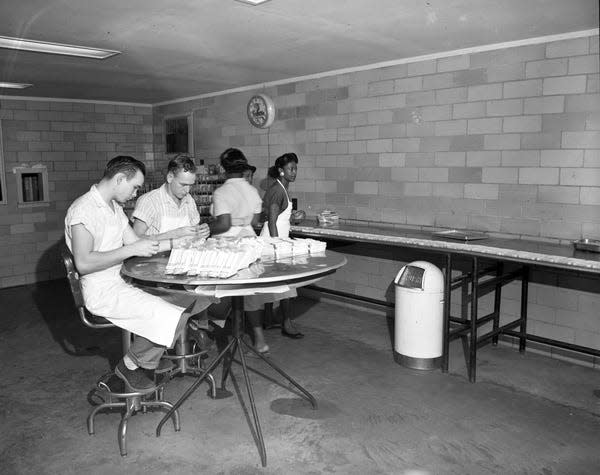
Spencer was the railroad round-house foreman in charge of maintenance of all the locomotives that moved troops and supplies between Tallahassee and Fort Gordon Johnson during World War II.
In 1948 he left the railroad and with proceeds from a patent for a device that extracted gum turpentine out of wooden barrels. He then opened the Royal Sandwich Company.
From a Gamble Street storefront, he catered to state office buildings and universities.
Spencer deployed trucks and vending machines, supplying sandwiches, soda, and cigarettes to 125 locations across the city and at the airport in the 1950s.
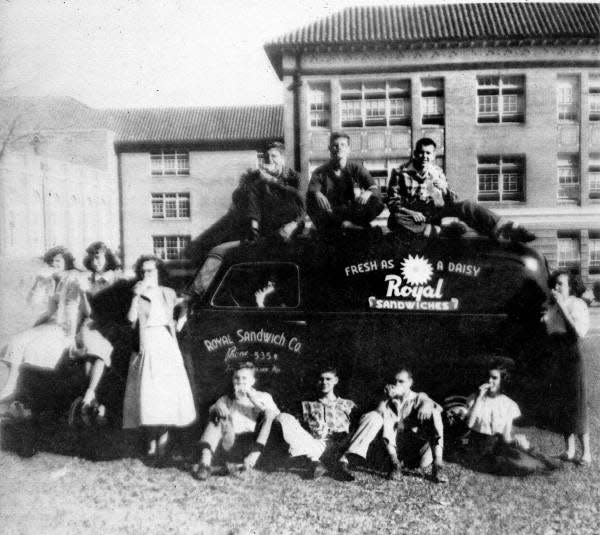
Once Florida State University fielded a football team, Spencer, a founding member of the Seminole Boosters, would employ up to 150 teenagers a game to hawk Coca-Colas, hot dogs, and peanuts at Doak Campbell Stadium.
“Why half the boys that have grown up in this town have worked for me out there. I’m proud when they tell me I gave them their first job,” Spencer told Tallahassee Democrat Editor Malcolm Johnson for a 1974 article on a change in federal child labor laws.
Spencer closed his sandwich and concession businesses in 1975. He became a developer and built several apartment complexes near the universities.
George Lewis II (1913 - 1996) and Clifton Lewis (1919 - 2014)
George Lewis II was the great grandson of B.C. Lewis, founder of the Lewis State Bank in 1856, and served as the CEO through the 1950s and 1960s. Under George, Lewis State Bank provided home and business loans to the Black community when other financial institutions refused to do so. It was also the source of bail money for protesters during the bus boycott and other demonstrations.
George was also a member of the Florida Advisory Board of the United States Commission on Civil Rights.
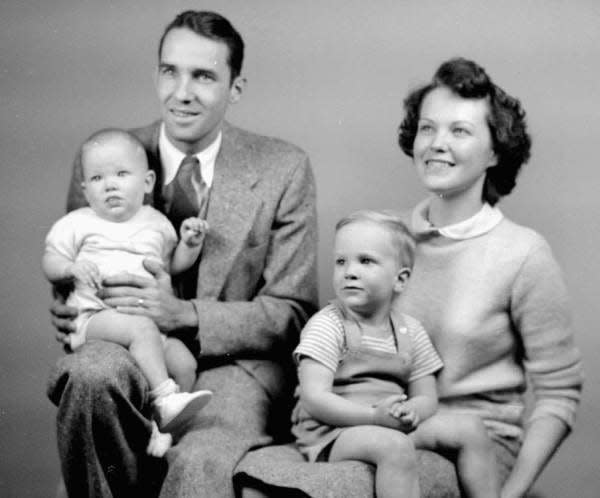
Know their names: A roll call of civil rights leaders who helped shape Tallahassee
Clifton was in the first first-grade class at Caroline Brevard Elementary School, graduated from Leon High School as the 1936 Tallahassee May Queen, and is remembered for her love of art, people, and good government.
Clifton began what would become the LeMoyne Art Foundation in the lobby of the Lewis State Bank and was the first president of the board for what would become the Tallahassee Museum of History and Natural Science.
She also lobbied the Governor and Cabinet, and the Leon and Tallahassee commissions to televise their meetings on public television. Local legend holds her dissertation-length presentations at local meetings resulted in both the city and county commissions setting time limits for public comments.
George and Clifton convinced architect-artist Frank Lloyd Wright to design a home for them in Tallahassee. The Lewis Spring House on Ohkeeheepkee Road was completed in 1954 and served as their home until their respective deaths.
The Lewis Spring House was placed on the National Register of Historic Places in 1979. In 1996, Clifton formed the Spring House Institute Inc., to transform the Lewis home into a teaching institute for the arts and humanity.
Rev. King Solomon Dupont (1903 - 1983)
King Solomon Dupont was the grandson of a man bought in Virginia and enslaved on a farm 12 miles west of Tallahassee. In 1957, he was the first Black candidate in a city election.
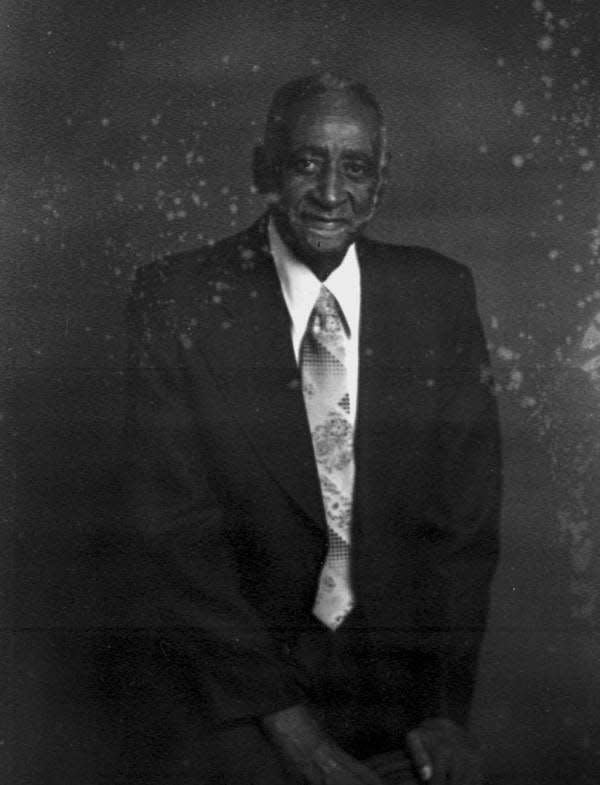
Dupont served as the lead pastor at Fountain Chapel AME Church and a founding member of the Inter-Civic Council, which organized the 1956 bus boycott.
The only issue the white incumbent Davis Atkinson wanted to discuss was how his opponent was “a candidate who is owned lock, stock, and barrel by the Negro InterCivic Council and the NAACP, two organizations whose only existence is for the purpose of the integration of the human races, a program of mixing just to be mixing.”
Dupont said he was concerned about high utility rates, and “better living quarters for low-income families.”
Three plate glass windows at a Black grocery store were smashed by bricks, one which police said had an obscene note attached warning Dupont not to run. At night white youths would drive by Dupont’s church and residence hurling insults.
Voter registration surged – a more than 40% increase to 13,000 – and the number of ballots cast more than doubled compared to the previous election.
With three quarters of registered voters white, Atkinson won reelection with 74% of the vote.
Data expert Matt Isbell's analysis of precinct results reveals a near perfect correlation (0.99) of race to vote. Tallahassee Democrat columnist Gerald Ensley also crunched the numbers and concluded no Black Tallahasseeans voted for Atkinson and 87 whites voted for Dupont.
It would be another 14 years and eight unsuccessful Black candidates before a Black person won an election in Leon County: James Ford would successfully walk the path first blazed by Dupont and win a city commission seat in 1971.
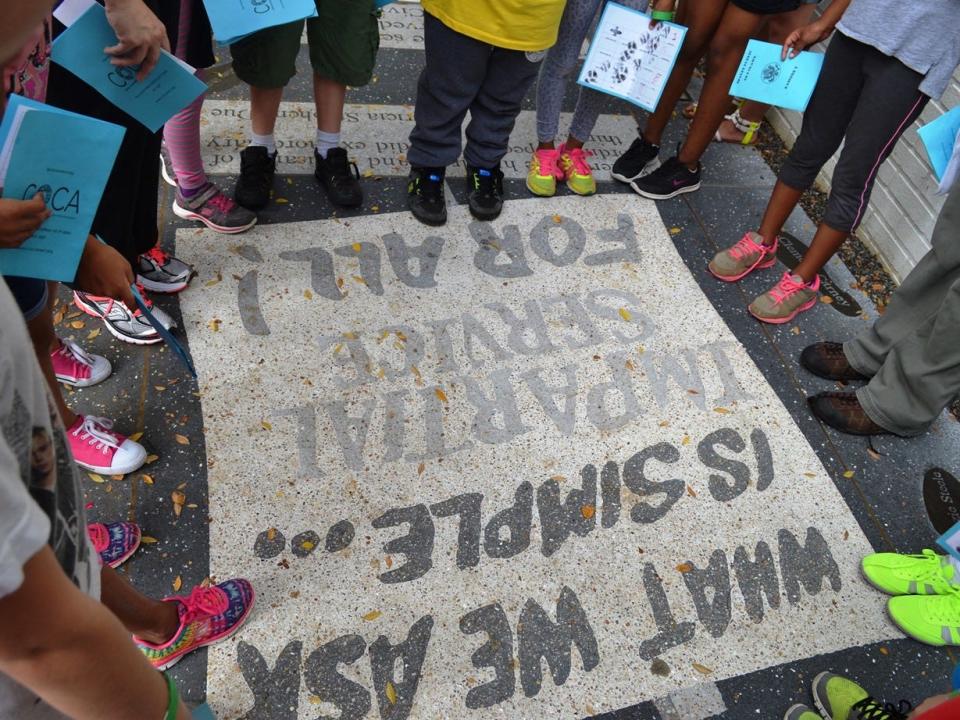
Dupont is included in the Tallahassee Civil Rights Oral History collection of interviews conducted by Dr. Jackson Lee Ice during the summer of 1978.
His name is one of 50 Civil Rights Foot Soldiers engraved on the Civil Rights Heritage Walk Memorial along Jefferson and Monroe streets. And both Dupont Drive and King Solomon Drive off of Wahnish Way are named in his honor.
Charles Louis Napoleon Achille Murat (1801 - 1847)
Charles Louis Napoleon Achille Murat was known as Achille and was the eldest son of Joachim Murat, the brother-in-law of Napoleon and King of Naples. When Napoleon was exiled, in 1815 Murat's father was executed and the rest of the family fled to Austria.
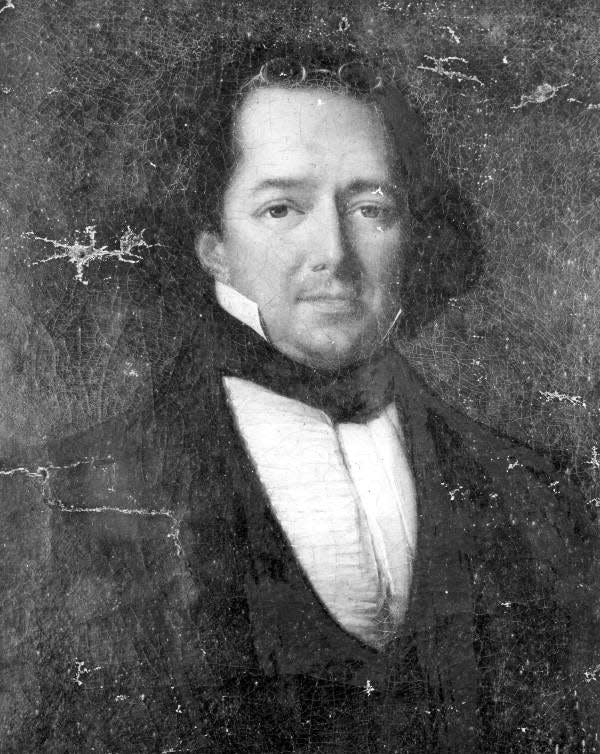
Seven years later, Murat took a room in the same Washington, D.C. boarding house as Richard Keith Call, the Congressional delegate for the Florida territory.
The two became lifelong friends and by 1825 Murat bought a plantation 15 miles east of Tallahassee.
He named it Lipona, an amalgamation of his native Naples. A year later Murat married Catherine Daingerfield Willis Gray.
Murat took the oath of citizenship in present-day Jefferson County and became an attorney, county judge, and director of Union Bank.
Murat would purchase three plantations in the area. While he spent much of his life trying to recoup his family’s lost fortune, he lived long enough to see Union Bank foreclose on The Lipona.
Historians consider Murat a man of eccentric ways.
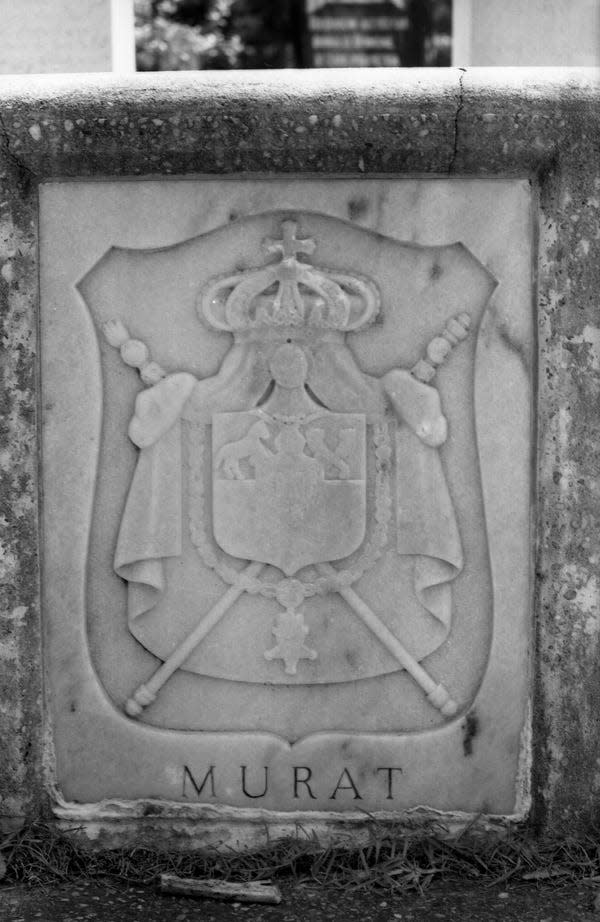
He had an aversion to water internally or externally. He never drank it without adding whisky to it.
He rarely bathed. Once, while onlookers feared he would be scalded after falling into a vat of syrup on a sugar plantation, Murat’s only comment was, now “Kate will make me wash.”
Murat kept a shaggy dog to use as a spittoon and cooked and ate all kinds of animals. Among his culinary experiments was an alligator-tail soup, which he wrote was “a little better than turkey buzzard soup.”
He found New Orleans to be home to “"the worst descriptions of French literature,” North Carolina “a bad imitation of Virginia,” and Charleston, S.C., “the city par excellence.”
Ralph Waldo Emerson was caught in a storm at sea with Murat and described him, as “a philosopher, a scholar, a man of the world; very skeptical but very candid, and an ardent lover of truth,” with “manners elegant to perfection.”
But the historical record does not always support Murat’s account of frontier Florida.
He and David Macomb dueled at Lake Iamonia either because Murat’s hungry slaves stole Macomb’s hogs or because Macomb supported Kentucky Sen. Henry Clay in a dispute with President Andrew Jackson.
Murat’s bullet pierced Macomb’s cloak without touching skin. Macomb shot off the little finger on Murat’s right hand.
Murat would pass in Tallahassee with Catherine by his side. His last words were said to profess his love for her.
Achilles and Catherine are buried in the St. John’s Cemetery. Their graves are marked by unobtrusive shafts of marble.
This collection of mini-biographies is part of TLH 200: the Gerald Ensley Bicentennial Memorial Project. Throughout our city's 200th birthday, we'll be drawing on the Tallahassee Democrat columnist and historian's research as we re-examine Tallahassee history. Read more at tallahassee.com/tlh200.
This article originally appeared on Tallahassee Democrat: Ten more of the 200 people who shaped Tallahassee ahead of bicentennial

